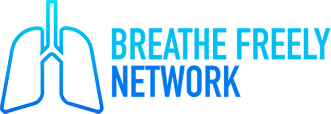Safely Using Your Nebulizer at Home During the COVID-19 Pandemic
COVID-19 is an infectious respiratory disease—a disease that can spread from one person to another through coughing, sneezing, and droplets in the air. The symptoms can range from mild to severe. While anyone can get COVID-19, individuals with lung diseases are more at risk for severe disease. Having your airways controlled is important during the pandemic.1
By taking your prescribed inhaled medications, you can:
- Breathe easier
- Do more of the things you enjoy
- Have fewer flare-ups or exacerbations
Continuing Nebulized Therapy at Home
You and your physician may have determined that a nebulizer is a good choice for getting inhaled medications deep into your lungs. This is where the medication is needed most. Nebulized therapy continues to be a safe and effective way to manage obstructive airway diseases at home. This is especially true now that all classes of drugs – inhaled steroids, anticholinergic and beta-agonist bronchodilators can now be given in a nebulized form.1
Special Considerations for Using Your Nebulizer if You Have COVID-19
Take your nebulized medications as directed. Pay attention to the following:2,3
Pre-nebulization
- Wash your hands.
- Ensure your nebulizer is clean.
- Ensure adequate protection for household members, if any.
During nebulization
- Choose a room where the air is not recirculated and nobody else will enter for 1-2 hours.
- When possible, nebulize outside the house on a porch, patio, garage or near open windows or in areas of increased air circulation.
- Nebulizer mouthpiece is preferred over facemask.
- Using a surgical or cloth mask on top of the nebulizer face mask is also encouraged.
Post-nebulization
- Clean and disinfect your nebulizer and its tubing after use.
- Clean the surface and areas of nebulization.
- Dispose of waste properly.
Given the absence of any conclusive data that link nebulized treatments to the transmission of SARS-CoV-2, physicians and healthcare institutions should consider “the right tool for the right patient” approach rather than a “one-size-fit- all” approach. Necessary protective measures should also be implemented when applicable.4
References:
1 https://www.lung.org/getmedia/d39b0987-3c9d-482f-803c-1784808ec7b9/ala-nebulizer-covid-v2-(2).pdf Accessed 12 March 2021.
2 Cazolla, M. et. Al. Guidance on nebulization during the current COVID-19 pandemic. Respir Med 2021 Jan; 176:106236.
3 https://college.acaai.org/nebulizer-use-during-the-covid-19-pandemic/ Accessed 12 March 2021.
4 Sethi, S. et. Al. The use of nebulized pharmacotherapies during the COvID-19 pandemic. Therapeutic Advances in Respiratory Disease 2020 Nov.









